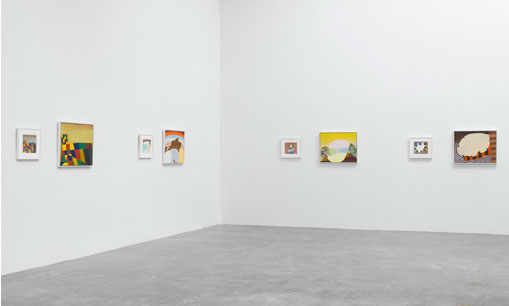This week at The L Magazine I review the Thomas Nozkowski show at Pace Gallery. It’s not his best exhibition.
There was a time when the separation of working sketches and finished paintings in exhibitions annoyed me. I was young, and I thought hanging the works side-by-side, so I could easily compare them, would help me learn.
The Pace Gallery’s current Thomas Nozkowski exhibition (through December 4) satisfies my younger self, hanging nearly half of the 60 careful abstract paintings next to what appear to be their studies (apparently he made the paintings first). It presents a strong argument for why such displays rarely occur: successive similar artworks often aren’t very interesting.
I tried to imagine the rationale Nozkowski would have offered in 2001, when he taught one of my classes at Rutgers. I came up with very little, but the pairings communicated a distilled narrative about the artistic process. My own evaluation of Nozkowski’s apparent decisions immediately followed. “Untitled (8-120)”: “I’ll make the circles smaller inside this blob.” Better. “(Untitled (8-115)”: “I’ll make the sky yellow instead of grayish-purple.” Worse. “(Untitled (N-30)”: “I’ll remove the white from this thicket of red hatching.” Not sure.
To read the full review click here.



{ 2 comments }
Making side by side comparison the focus basically says to the viewer (i) we’re not confident about these works individually or (ii) this artist is so important you need to see a show documenting his thought process while he is still alive. Pace needs a resident “no person” to veto such ideas.
WRONG- this show displays the visual delight that can still be found in making paintings this way after so many years. The drawings unearth some of the more blunt and illogical decision making that often gets obscured by the painting process, so the hanging of the show acts a way to compare, contrast, and imagine that there are multiple ways the image could have reached completion.
Comments on this entry are closed.